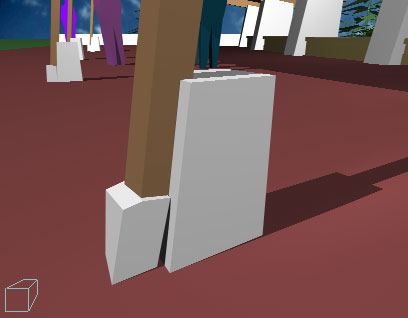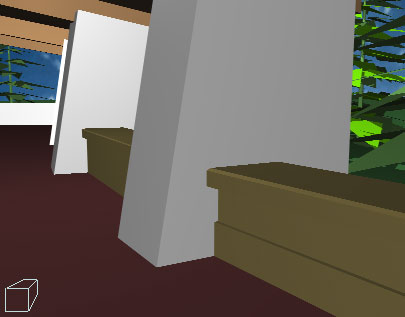Exercise 4 – 3D details
![]()
LA 408/508 Intermediate CAD Workshop * Spring 2001 * Barwood
Last Updated on: 05/24/01 04:50 PMDue at the beginning of class on May 29, 2001 in:
"Courses on Andromeda" K:\LA408-CADworkshop\Submitted Exercises\Exercise4\Ex4-YourInitials.dwg
|
The shelter project you have been working on for the last few months has reached a point in the process where you need to explore the details further. In an effort to clarify the design intent, your project leader asks you to produce a simple 3D model of the shelter you designed previously.
|
| Using the tools and methods demonstrated in
class, produce a 3D model of a portion of the shelter you designed for
Exercise #2. Use color to distinguish between materials.
Produce enough detail so that the design is self-explanatory. A
couple of examples...
|
 |
| Simple rendering of the shelter model
|
| The repetition of this form makes modeling
it quite simple. I only had to create one set of post and beam
connections for the shelter and then arrayed them accordingly. The
roof was created by extruding a section along a curved path. The
maroon paving is an extruded polyline. The trees and people are
blocks.
|
 |
| Same model, different view
The power of any type of 3D model is its ability to quickly communicate design intent. In this case, modeling the entire shelter at a certain level of detail allowed me to produce detail views, in essence, for free.
|
 |
| Sitting Wall
|
| The views above were created using the
render feature of AutoCAD. Try creating a distant light (sun) and
rendering the model from an isometric or perspective view. Adjust
the view and re-render until you create compelling images. Choose
layer colors that approximate natural world colors. Chose from the
muted range of colors--the real world is far less colorful than the
AutoCAD's standard palette. The assignment of materials is beyond
the scope of this class, but I suggest you experiment with material
mapping to layers if you are interested in the technique.
Render three views as graphic files (.jpg, .bmp, .tga) and save along with the AutoCAD file (include all XREF's) to the location shown above. |
| A couple of suggestions: |
|